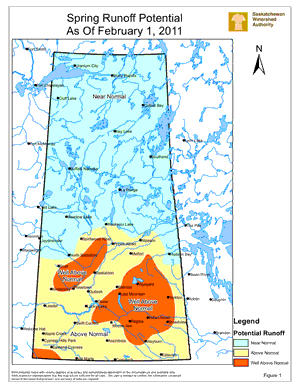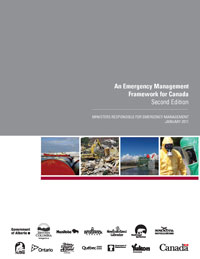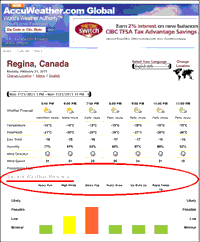Extreme Events: Adaptation Strategies
Adapting to more frequent and severe climate extremes can often involve similar strategies, regardless of whether it is a flood or drought, heat or cold. There are even similarities with actions to minimize risk associated with non-natural disasters (explosion, derailment, etc).
1. Emergency Management
Emergency management is a priority adaptation to extreme events since the major objective is protecting human life and property. Traditionally, emergency management has focused on preparedness and response. However, it now encompasses four components: prevention and mitigation, preparedness, response and recovery.
The emergency management approach is reflected in the recently released Federal/Provincial/Territorial agreement on an Emergency Management Framework for Canada (Figure 1). This should be beneficial in dealing with natural hazards and climate change as extreme events become more frequent and costlier. The cost of prevention and mitigation can often be more effective and efficient than the cost of response.
Emergency management efforts are everyone’s responsibility – individuals, businesses and communities as well as the federal, provincial and municipal governments. Federal efforts are coordinated by Public Safety Canada, while in Saskatchewan protection and emergency services are managed by SaskEMO within the Ministry of Corrections, Public Safety and Policing.
2. Emergency Preparedness and Response
To help individuals and families to prepare for a variety of risks both the federal and provincial governments provide web-based information. Public Safety Canada has a dedicated website – Getprepared.ca – that addresses natural disasters. For information specific to Saskatchewan go here.
SaskEMO also provides access to information on dealing with natural disasters, as well as funding assistance for emergency planning and staff training.
Health Canada provides information for heat waves.
3. Warning Systems

Advance notice of an extreme event can help individuals, businesses and communities to prepare and reduce the risk. Climate change scenarios provide a long term perspective to support adaptation. Weather forecasts are provided by Environment Canada and flood advisories and forecasts are provided by Saskatchewan Watershed Authority (Figure 2).
Forecasts can include the potential risk associated with specific extreme events (Figure 3).
Agriculture and Agri-Food Canada provides an interactive website entitled “Drought Watch". It allows the user to assess risk associated with recent weather.
Saskatchewan Agriculture also monitors drought condition via its weekly crop report system.
Environment Canada provides radar imagery that shows intensity of precipitation for most settled areas in Canada - in real time. This is a valuable source of information to track storm movement.
4. Insurance
Insurance can be an effective adaptation tool and is a traditional practice for reducing the risk of a loss from a natural hazard. Insurance coverage provides help and support to deal with emergency response and recovery.
Individuals and businesses should assess their risk to extreme events and ensure that they have appropriate insurance coverage.
Insurance claims can provide funds to redevelop to a standard and/or new location that is more resilient to the recurrence of an extreme event.
Insurance may provide an economic incentive for an owner to take adaptation action. Insurance may be denied in some locations due to high risk (e.g. floodplain). If an owner wants to be insured they have to move. Alternatively, premiums may be set high, at least until improvements are made to reduce the risk.
5. Disaster Response
Disaster response is another traditional adaptation tool. It has often been provided by several levels of government following an extreme event. However as the frequency of extreme events increases and the impacts become more expensive, alternative measures such as prevention and mitigation become more attractive.
There is also a human side to extreme events. Extended drought, building loss, home loss, crop loss, etc. can be traumatic. For farmers, specifically, Saskatchewan Agriculture provides a Farm Stress Line – a toll free telephone counseling service.
6. Community Planning and Design
Community planning and design offers a cost-effective opportunity to anticipate extreme events and climate change and to take action to reduce the associated risk. Zoning plans can prohibit development in high-risk areas (e.g. adjacent to waterways prone to flooding) or encourage existing residents and businesses to relocate. Development guidelines can be adapted to reduce wind and heat island effect, provide for stormwater retention, and prescribe appropriate landscaping and tree planting.
7. Infrastructure and Building Design
Infrastructure design should consider extreme events and future climate conditions to ensure communities are resilient. Infrastructure improvements can address a number of extreme events including flood (e.g. dykes), drought (new water supply) and high winds. Appropriate building design standards and codes should be adopted for all developments that will minimize the risk from extreme events. For further discussion on communities go to our Communities section.
Saskatchewan Extreme Weather Events
The extreme weather events experienced within Saskatchewan along with adaptation considerations are each presented on separate web pages:
Thunderstorms and
|
Wind |
Tornado |
Hail |
Heat |
Drought |
Wildfire |
Cold |
Winter Storms |
Frost |
Next Page › Thunderstorms & Flooding OR choose from the list above.

